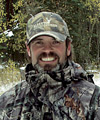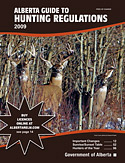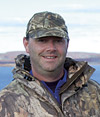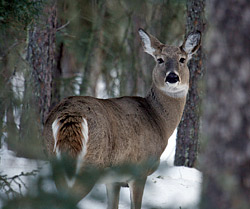|
 |
 |
Hunters are a passionate group who take their outdoor pursuits seriously. So seriously in fact we often take our experiences when hunting and extrapolate the information we feel is important to the health of our favourite WMUs, and then quite often, wonder why that same information hasn’t been gathered by our wildlife managers. You know; the people who make the rules we follow when hunting. The people that aren’t managing our wildlife to the degree that we’d like to see in our favourite WMUs. The people that don’t seem to be listening.
If you were to judge the temperature of a large number of hunters, you would probably get the feeling that our wildlife managers have no idea of what they are doing.
But have you ever stopped and wondered who those people are? Where they get their information from and how they make the decisions that affect our hunting choices?
Collectively, those people are an assemblage of individuals with unique backgrounds and interests. They are an intelligent group and for the most part have common goals, but not always. These people are our biologists, our enforcement officers, our wildlife specialists, our lawmakers, and yes, our hunters, farmers and landowners. Because truly, our regulations, allocations and seasons are born from discussions that take place at the ground level. Starting with you and me, the hunters, the farmers, and the landowners.
 |
For management purposes, Alberta was divided into 17 areas many years ago. Those areas were further divided into Wildlife Management Units (WMUs) that over time have grown to reach 178 in number, with each having its own characteristics that may set it apart from the others related to it. But for the most part the province is managed on an area by area basis with a wildlife biologist for each area. For some of the larger areas, a technician may be employed to assist the biologist but generally the biologist is on his own. It is here though, where the process begins that ultimately leads to the setting of our regulations.
And according to Provincial Big Game Specialist Rob Corrigan, the man responsible for our hunting and trapping regulations and seeing them through the regulatory process, our “bios” are very busy people.
 |
Provincial Big
Game Specialist
Rob Corrigan |
“To set the allocations and harvest goals they use a number of different things, like taking aerial surveys, the game harvest survey, and public consultation,” said Corrigan, who is 2 1/2 years into his new position at the top Fish and Wildlife office in the province, the Wildlife Management Branch in Edmonton. “They hold post hunting season meetings and community hunting season meetings; it’s an opportunity for the locals, primarily hunters but also anybody that’s interested in the resource, to come and share their opinions on how they think things are going.”
Biologists have been holding these types of meetings for many years now and encourage public participation through local advertisements and notices. Unfortunately, not all meetings are well attended and quite often only one side is represented.
“Hunters, of course, typically think there’s not enough animals and we need longer seasons,” said Corrigan, who spent 10 years working for the ACA on various habitat projects. “While farmers on the other hand, they’re saying there’s way too many animals; the county rate payers are hitting too many deer on the highways and the country roads, so it’s a balancing act. And that is probably the hardest part of the area bios’ job; to balance the concerns of the different groups.”
But of course there has to be different groups present if the bio even has half a chance to understand the wishes of those in his area. Some meetings hold as few as a dozen people, others as many as one hundred or more.
And while our biologists are gathering as much information from the public as they can, Rob Corrigan and others in our Wildlife Management Branch are holding their own meetings with groups like the Alberta Fish and Game Association (AFGA), the Alberta Bowhunters Association (ABA) and the Alberta Professional Outfitters Society (APOS). But according to Corrigan, this is something they can improve upon.
“We haven’t done a very good job in the past of hearing their concerns, or in having an avenue to hear landowner and county concerns,” said Corrigan. “So what we’re doing this year is we’re initiating a new group called the Alberta Game Management Advisory Group. So far we’ve had one meeting and we’re meeting again this month (January). It’s an opportunity for us to have all the groups together in one place and discuss the issues that each group may have right there.”
The new group will be a mixed bag of stakeholders including the Alberta Beef Producers, Alberta Association of Municipal Districts and Counties, and a representative from the Alberta Wildlife Society along with hunting groups, AFGA, ABA and APOS.
“It’s fine if it’s just a consultation with hunters; there’s never enough deer, there’s never enough elk, there’s never enough moose, but throw in all the rest of the groups and the concerns change,” said Corrigan.
 |
| Many factors are taken into consideration when setting allocations including fawn production. |
And public and stakeholder consultations are just one step in the process. The wishes of individual groups can only be filled if wildlife populations are healthy or exceeding carrying capacities. This is another part of the area biologists’ job; determining exactly what those populations are.
And this is where aerial surveys become an important part of the biologists’ arsenal. Unfortunately, for a cash-strapped fish and wildlife division, aerial surveys are extremely expensive and used very selectively. And they bring with them a host of issues on when and how they are flown, including snow cover, whether or not it’s snowing, and how cold the outside temperature is to name just a few.
Ideally aerial surveys start as soon as hunting season ends and run through to the end of February. Looking for antlers is much easier with snow cover and of course, having the antlers attached helps as well. Our biologists are not only counting numbers but looking for age classes and male to female ratios. So aerial surveys are integral to sound management decisions, but they too can only help so much.
Rob Corrigan explains: “Typically what happens is a WMU will be flown. Let’s say the population estimate is 3000 deer, that’s post hunting season. The bios have models they have built or models that they work from. They take into account winter mortality based on whether it’s a mild winter, a moderate winter or a severe winter, using a correction factor that will decrease the population for each.
“So let’s say that based on winter mortality there might have been 500 that died. So we take that into account. Then we take into consideration fawn production; the historic number of fawns per doe, 1.2 or 1.5 or whatever the number is, and that’s your production.
“Then you also have factors based on what you think incidental mortality might be; road kills, native harvest, coyote predation, anything like that, and then you have a population estimate going into the next hunting season. And if you do your modeling correctly, then your population estimate is probably pretty good. If you did your modeling based on a mild winter and then you get a moderate winter, you will be out a little bit.”
Unfortunately weather plays a huge part in just how far out a projection can be, but not even meteorologists can foresee the future very well.
“Let’s say you fly a survey this year but maybe now that WMU won’t get flown again for three or four years. So every year if you are out a little bit, by the end of it, when it is flown again, you could be out by quite a bit,” said Corrigan, who had the opportunity to work with the reintroduction of peregrine falcons into Alberta. “So it’s not an exact science but we can’t fly 175 WMUs every year.”
Because aerial surveys are so expensive this year only 35 of the 175 WMUs in the province will get flown. And many WMUs are seldom flown, namely the farther and much larger northern WMUs where hunting pressure isn’t great but flight costs are high.
Biologists also use aerial surveys in one WMU to adjust population estimates in neighbouring WMUs with similar terrain that didn’t get flown. And while there may be some guesswork involved, math and commonsense usually put population estimates reasonably close to actual numbers.
But what has Corrigan really excited is the new “online” game harvest survey that he feels will allow the Wildlife Management Branch to get a better idea of what is actually going on out there. It also allows for the opportunity to test the temperature of what the hunting community wants through future questionnaires or polls that will eventually be added to the new online survey.
Since the 1980s SRD have been doing game harvest surveys by using fish and game clubs and other service groups to phone hunters and question them about their success on specific licences. But with the telephone system came another host of problems including privacy issues and a lack of bodies making the actual phone calls, so information was often lacking for key parts of the province.
“This survey is going to go out to anybody that is registered on the Alberta Relm website with an email address and who purchased a licence in 2009,” said Corrigan. “Everybody who participates will be able to fill out a questionnaire on all their licences, so it’s not just specific licences and this will give us a larger sample to work with.”
Having received the online survey at home myself and having completed it, I can attest to its ease of use. And like Corrigan, I can also envision a whole new world of opportunity opening up for game management in Alberta. The new system will eventually give hunters the opportunity to express their feelings on what they would like to see happen in Alberta where hunting is concerned. Let’s face it, we all don’t have the same goals in mind, some hunt for trophy quality while others may be more interested in just putting some meat on their table.
 |
| Provincial Big Game Specialist Rob Corrigan knows the importance of hunting and its role in wildlife management. |
“We need to get a better sense of what the hunters want,” said Corrigan, who grew up in a non-hunting family in St. Albert. “As an example, we hear lots about poor trophy quality, you know; I used to be able to go and shoot a 170 class in half a day and now I can’t. So, what do hunters want: do they want to be able to hunt mule deer every two or three years or do they want to wait six or seven years to get drawn? How do we get that answer? This is what we struggle with.
“A lot of hunters just can’t get away to hunt for a trophy, they have a job and can only hunt for a couple of days. They don’t care about a trophy animal; they just want to fill their tag.”
And so the balancing act continues for a Wildlife Management Branch that seldom receives a pat on the back for getting it right.
“We get a lot of criticism for some of our elk zones being on the three-point rule whereas in B.C. they are six-point zones where they are growing these big bulls. We can grow big bulls in Alberta too; we can put stuff on draw. But do we want to? Or do you want to be able to go out and shoot a 3-point bull or a 5-point bull every year. It’s a big juggling act,” said Corrigan, a hunter himself and father of three, including a daughter and son who both have an early passion for hunting.
“It’s not that we’re not listening because we are; there’s just more to game management than trying to satisfy the hunting community alone. It’s a huge part of it and we do listen to the hunting community more than we listen to anybody else, but we still have to listen to everybody else too.”
And Corrigan is convinced that wildlife management in Alberta is about to enter some pretty exciting times.
“Hunting in Alberta isn’t perfect, but it’s pretty darn good. And I think we can make it even better.” ■
For previous Outdoor Pursuits click here.
|
|
|
|


